If you’re looking for an ornamental addition to your native garden or perhaps you don’t have too much space to work with and you want to establish a small tree in your landscape, look no further than the Gumbi Gumbi tree.
With pendulous branches, weeping willowy foliage and delicately clustered creamy-yellow tubular flowers, this hardy evergreen tree can certainly impress and add luscious textures to any garden setting or existing collection.
Here is everything you need to know to grow and care for the beloved Gumbi Gumbi tree.
More...
Genus: | Pittosporum |
|---|---|
Species: | P. angustifolium |
Family: | Pittosporaceae |
Common Names: | Gumbi Gumbi, weeping pittosporum, bitter bush, native apricot |
Location: | Outdoor |
Type: | Tree |
Growth: | 4 to 8 metres tall, 3 to 5 metres wide |
Sun requirements: | Full sun to light shade |
Foliage Colour: | Green |
Flower Colour: | Pale yellow |
Flowering: | Late winter to spring |
Fruit: | Inedible orange fruits |
Maintenance Level: | Low |
Poisonous for pets: | Non-toxic to cats and dogs |
Getting to Know Gumbi Gumbi
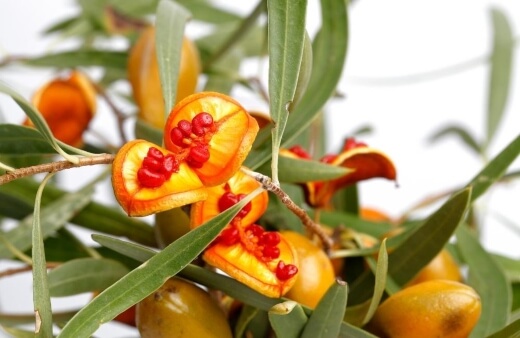
This resilient desert species can live for over a century and is famed for its attractive loose weeping form and highly decorative orange apricot-like fruits that also last for many years.
Though the fruits are inedible, the leaves make this plant a well-known bush tucker that has benefited the indigenous population for many generations.
Widely planted as an ornamental native in gardens, this tree is perfect for smaller spaces or even used in large containers thanks to its narrow growth habit and slow-growing attitude.
Botanically named Pittosporum angustifolium, Gumbi Gumbi is also commonly known as weeping pittosporum, bitter bush or native apricot and is native to Australia where it occurs in all states except Tasmania and the Northern Territory.
Also naturally widely distributed in our inland areas, this tree is often found in isolation and was formerly known as Pittosporum phillyreoides.
(See our in depth guide on Pittosporum and its many varieties here.)
Part of the Pittosporaceae family, it has long been considered an important indigenous medicinal plant but despite its common name, the fruit isn’t considered a food source but rather the leaves are what is used for their medicinal qualities.
Pittosporum angustifolium Features
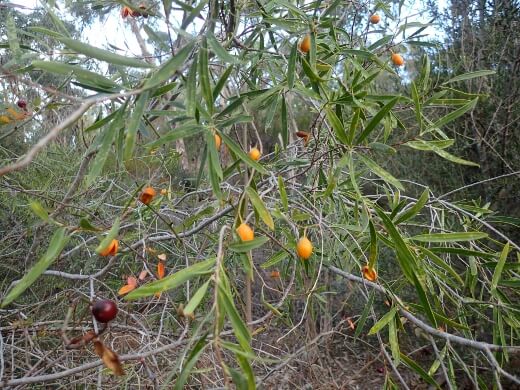
Source: inaturalist.ala.org.au
This tree grows to around 4 to 8 metres tall and 3 to 5 metres wide in cultivation with reports suggesting it can grow up to 10 metres tall in its natural habitat.
It is slow-growing with an upright, pendulous and open loose form, often considered informal. It has long, thin linear light-green leaves and pleasantly scented pale-yellow flowers that form small clusters between late winter to mid-spring.
An excellent ornamental addition to gardens, this tree can also provide shade and can be used for informal hedging and screening purposes.


Get Your Free Guide:
Master Growing Australian Natives eBook
A Must Have Complete Guide for Every Australian Garden
Get Your Free Guide:
Master Growing Australian Natives eBook
A Must Have Complete Guide for Every Australian Garden
The weeping silhouette and loose form allow this plant to add texture and verticality to outdoor spaces. It will attract birds, bees (find out more about the types of bees here), insects and lizards and is known to fruit from year three onwards.
How to Grow Gumbi Gumbi

Source: frasercoastnursery.com.au
Growing Gumbi Gumbi tree by seed is the most effective and reliable method of propagation. Germination is quite speedy where most report initial spouting within only about 17 days in the right conditions.
The ideal temperature for germination is around 25°C and it is recommended to sow seeds in spring. Seeds can be collected from fruits or purchased from local or online retailers.
Growing Pittosporum angustifolium from Seeds
- Soak your seeds overnight to help with germination.
- Prepare well-drained containers filled with quality potting mix or well-draining seed raising mix.
- Sow the seeds just under the surface of the mix.
- Water after sowing and keep moist until germination in about 2 to 3 weeks.
- Place your containers in a warm and humid location away from bright direct light and strong winds.
- After germination, allow your seedlings to develop for another 2 to 3 months before transplanting them into the garden or a larger container.
Ideal Planting Conditions for Native Apricot

Source: gumbileafpower.com
This hardy and well-adapted native can grow in many conditions as long as a few basic requirements are met. Before planting, be sure to consider which location in your landscape will give Pittosporum angustifolium the best chance to thrive.
Remember, these trees live for a very long time so picking their forever home is an important part of the journey. The root system of this tree is considered non-invasive.
Lighting Conditions
Full sun is preferred for best growth but it can also grow in lightly shaded positions. The more full sun the tree receives, the better for growth, fruiting and flowering.
Soil Needs
It can grow in many soils from heavy clay to mostly sandy soils. The best soil for Gumbi Gumbi is well-draining loamy soil or potting mix.
For more on potting mix, refer to our potting mix buying guide.
Temperature & Humidity for Weeping Pittosporum
Being very drought-tolerant, this tree does not require more than average garden humidity levels. It is also frost resistant so as long as long exposure to freezing temperatures is avoided, your tree should thrive quite easily.
Thanks to how widespread it is throughout the country, most Australian gardens should provide optimal growing conditions.
Weeping Pittosporum Hedging & Screening Tips
- Plant 50cm to 1 metre apart for hedging and screening purposes.
- Rather than digging individual planting holes, dig a planting trench for the best results.
- This tree looks fantastic as a background screen in gardens.
- It can grow in narrow spaces and be pruned to control size and shape.
More reference: Australian Native Hedge Plants – Gardening Guide
Caring for Gumbi Gumbi Tree
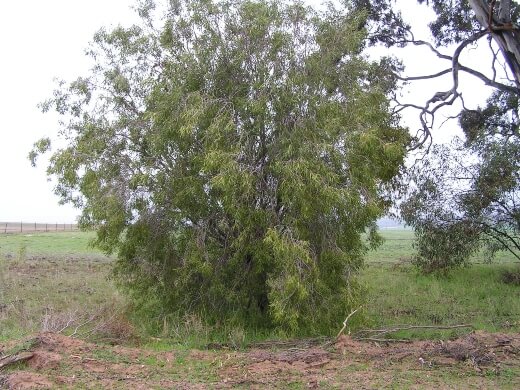
Source: nativeshop.com.au
Pittosporum angustifolium can survive with little rainfall and generally doesn’t require much maintenance and care overall. Being widespread in the desert, this tree is pretty self-sustainable. Here are some quick care tips.
Watering Schedule
You won’t need to water your tree much thanks to its drought-tolerant nature. While developing, water as needed and water deeply throughout long dry seasons.
Fertilising Gumbi Gumbi
Though not entirely necessary, you can moderately feed your tree with a slow-release garden fertiliser over the growing seasons for an added boost to flowering and fruiting.
Pruning Needs
When young, you will need to train weeping pittosporum quite rigorously to develop an upright habit with a strong central support trunk and healthy branch structure.
Do this by annually pruning back stray branches, keeping the focus on the central, main trunk. Once established after about 2 to 3 years, occasional thinning of low-hanging small branches and damaged or dead foliage is all that will be needed.
Try to avoid overly thinning the crown of this light-canopied tree as this could lead to it being scorched by the sun.
Mulching Native Apricot Tree
It is recommended to mulch around the base, but not too close to the trunk, before summer to reduce water wastage and to help your tree retain moisture.
In late spring, water the ground well around your tree and spread an even layer of mulch across the top of the drip line.
Related Guide: Best Types of Mulch for the Garden – When and How to Use It
Pittosporum angustifolium Pests & Diseases
Weeping pittosporum is considered disease and pest free in most states. Seeds can be susceptible to rot in overly wet conditions but once this tree strikes, there is very little information or reports on any disease or pest issues.
Quick Gumbi Gumbi Bush Tucker Guide
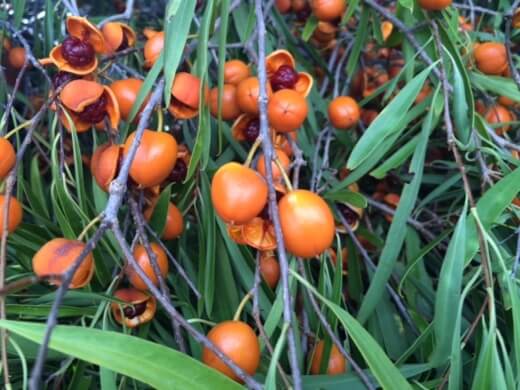
Source: austsuperfoods.com.au
It is important to note that not every Gumbi Gumbi is safe for human consumption. There are a few different varieties of Pittosporum that are all referred to as Gumbi Gumbi.
This specific variety does produce particularly palatable and safe leaves that you can use in your bushfood garden. Again, the orange fruits are not eaten in any way.
Those will need to be collected, cleared and discarded once they have fallen from the tree.
- This plant has been featured widely in Aboriginal bush medicine for a long time for the treatment of coughs, colds and even eczema.
- There have been reports that this plant can help in curing certain cancers but there is not enough scientific evidence to support these theories.
- Today, this plant is most commonly used as a tea where the leaves can be steeped in hot water to make a flavoursome, aromatic and healthy brew.
- Leaves can be used fresh or dried.
- Simply pluck and collect fresh leaves from your tree as needed. Alternatively, you can collect leaves in batches and dry them for use at a later stage.
- Thanks to its evergreen nature, Gumbi Gumbi can supply you with leaves throughout the year.
Gumbi Gumbi Frequently Asked Questions
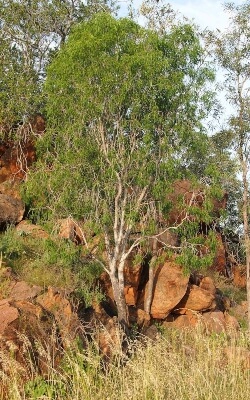
Source: en.wikipedia.org
What is Pittosporum angustifolium used for?
Cattle are known to graze on the leaves for some added nutrition. The timber can be used for woodturning. Many gardeners plant this tree for its ornamental uses thanks to its prized weeping habit and decorative fruits and flowers.
The leaves have long been used as valuable bushfood for medicinal purposes.
What does Gumbi Gumbi taste like?
Once the leaves have been steeped in hot water to make tea, many say it has a slightly bitter, peppery taste.
What does Gumbi Gumbi mean?
In the traditional Ghungalu language which many of the Aboriginal people of central Queensland speak, it means “woman woman medicine”.
If you’re an avid grower of native plants, be sure to check out our other helpful guide below:
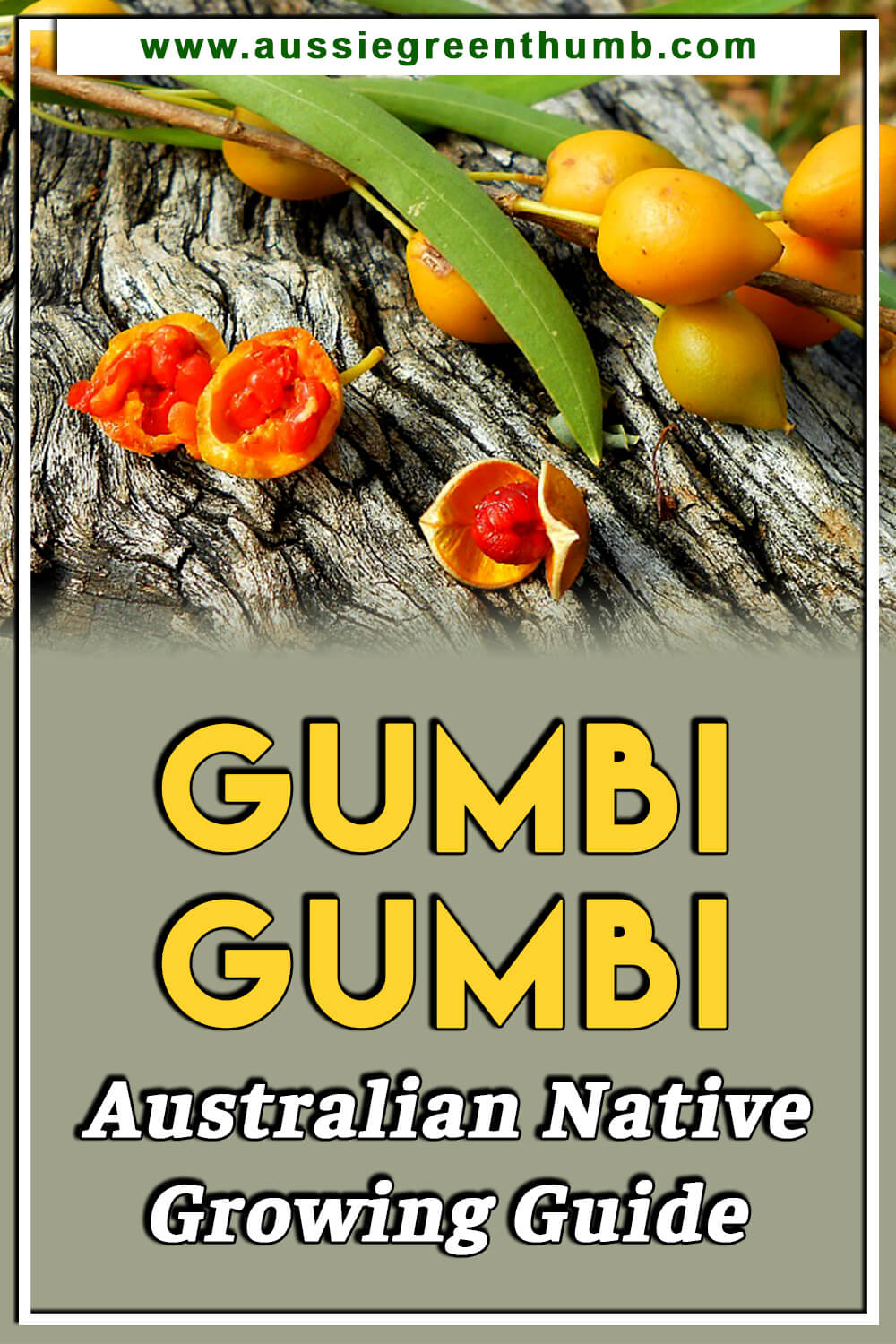
Galvanise Your Gardens Native Glamour with the Gumbi Gumbi Tree
It’s easy to see why this stunning weeping tree has become so popular as an ornamental addition to so many gardens, not only in Australia but across the globe. Its attractive form, decorative fruits and sweetly-scented flowers can easily add spectacle and texture to any garden setting.
Whether planted alone as a feature or alongside other native plants, Pittosporum angustifolium is a worthwhile consideration for anyone looking at establishing a small ornamental tree in their landscapes.
Get your Gumbi Gumbi today and start enjoying this wonderful weeper in your garden.
Published on June 19, 2022 by Nathan Schwartz
Last Updated on February 26, 2024




